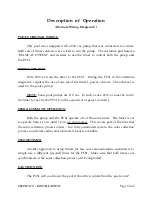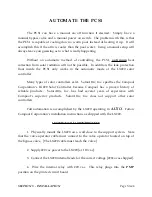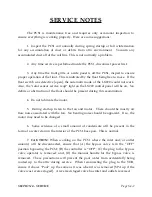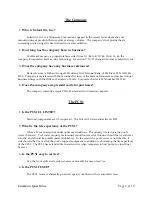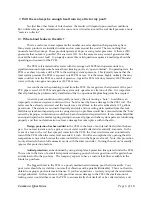
SECTION 4 - SERVICE
Page S4-5
WINTERIZATION
Bypass Valve Consideration
In the process of winterization, air is blown through all of the pipes to eliminate
water inside of the pipes [and all valves]. The bypass valve should be exercised in
both directions a few times to eliminate all of the water within the valve. This can
be accomplished using the manual on/off function of the LX220 or by manually
turning the valve in both positions. This should eliminate all water in the valve!
However
, there have been two reported incidents of cracked bypass valves during
spring start-up. The bypass valves were found to be cracked along the underside of
the valve. This indicates that water was inside the valve during a freeze. This was
probably the direct result of either: A) An improper winterization effort; or, B) A
bypass valve that is installed in such a position to either ÒtrapÓ or Òcollect-backÓ
water into its base. After the pipes have been drained, a small amount of trapped
water or moisture may still be present in some of the pipes or valves depending
upon how the system is plumbed. If the bypass valve represents such a ÒtrapÓ or a
Òcollection pointÓ for residual drain-back within the plumbing, it may cause damage
to the valve. Water that freezes needs expansion space.
Two approaches can be used to eliminate this type of ÒplumbingÓ problem: 1) Install
a small drain hole, valve or pitot tube near the bypass valve to drain off any water
that could get trapped, drain-back or accumulate back into [or at] the bypass valve.
An examination of the plumbing should reveal if any trapped water or drain-back of
moisture would be accumulated inside of the bypass valve. OR, 2) Remove the
valve operator, top screws and internal valve diverter. Inspect for water
accumulation after winterization. There shouldnÕt be any. Non-toxic antifreeze can
be poured into the valve if desired. >>#1 is a common approach used in plumbing.
CAUTION
The bypass valve should be installed in such a way that moisture or water does not
get trapped into the valve or is allowed to drain-back or accumulate inside the
valveÕs body after winterization. This can create damage to the valve during the
winter freeze cycle. Also, improper winterization of the valve will lead to damage.
Summary of Contents for PCS1
Page 7: ...SECTION 1 SYSTEM ARRIVAL Page S1 1 SECTION ONE SYSTEM ARRIVAL...
Page 22: ...SECTION 2 HEATING DATA Page S2 1 SECTION TWO HEATING DATA...
Page 28: ...BTUS Vs GPM BTUS Vs T SECTION 2 HEATING DATA Page S2 7...
Page 34: ...SECTION 3 INSTALLATION Page S3 1 SECTION THREE INSTALLATION...
Page 65: ...Attic Installation Photos SECTION 3 INSTALLATION Page S3 31...
Page 66: ...Attic Installation Photos SECTION 3 INSTALLATION Page S3 32...
Page 88: ...SECTION 4 SERVICE Page S4 1 SECTION FOUR SERVICE...
Page 99: ...Common Questions Page 1 of 10 COMMON QUESTIONS...
Page 109: ...Dictionary of Terms Page 1 of 4 DICTIONARY OF TERMS...

